Discover 11 hidden attractions, cool sights, and unusual things to do in Monroe (United States). Don't miss out on these must-see attractions: River Raisin National Battlefield Park, George Armstrong Custer Equestrian Monument, and Monroe County Museum. Also, be sure to include St. Mary's Church Complex Historic District in your itinerary.
Below, you can find the list of the most amazing places you should visit in Monroe (Michigan).
Table of Contents
River Raisin National Battlefield Park
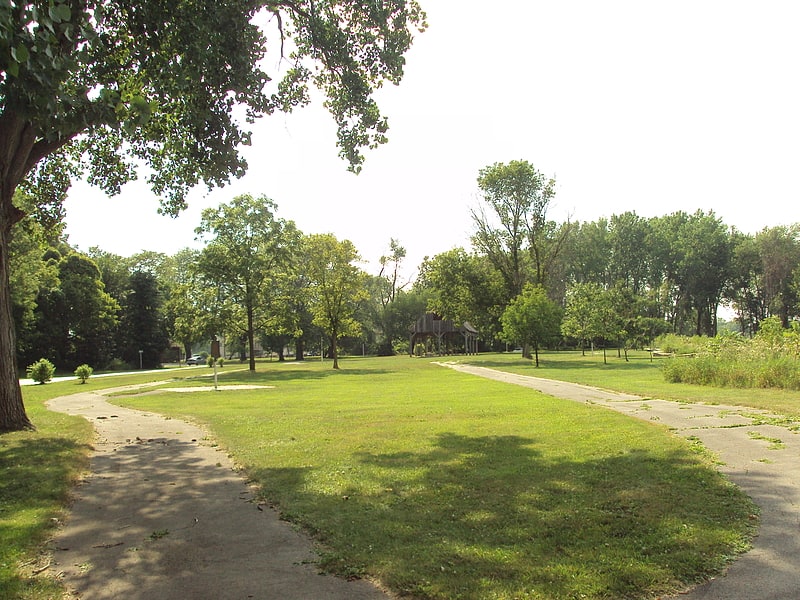
National park in Monroe, Michigan. The River Raisin National Battlefield Park preserves the site of the Battle of Frenchtown as the only national battlefield marking a site of the War of 1812. It was established as the 393rd unit of the United States National Park Service under Title VII of the Omnibus Public Land Management Act, which was signed into law on March 30, 2009. The park is located in the city of Monroe in Monroe County, Michigan. It was designated as a Michigan Historic Site on February 18, 1956 and was added to the National Register of Historic Places on December 10, 1982. The house at 1403 East Elm Avenue was added to the National Register listing in 2019. It officially began operation as a national park unit on October 22, 2010.[1]
Address: 1403 E Elm Ave, 48162-2524 Monroe
George Armstrong Custer Equestrian Monument

Statue by Edward Clark Potter. The George Armstrong Custer Equestrian Monument, also known as Sighting the Enemy, is an equestrian statue of General George Armstrong Custer located in Monroe, Michigan. The statue, scuplted by Edward Clark Potter, was designated as a Michigan Historic Site on June 15, 1992 and soon after listed on the National Register of Historic Places on December 9, 1994.[2]
Monroe County Museum

Specialty museum, Museum
Address: 126 S Monroe St, 48161 Monroe
St. Mary's Church Complex Historic District
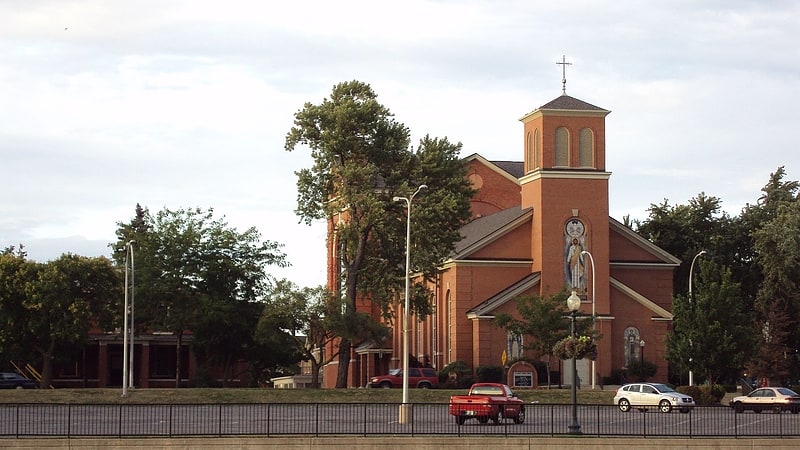
Building. The St. Mary's Church Complex Historic District is a historic district located at the junction of Elm Avenue and North Monroe Street in the city of Monroe, Michigan. It was listed as a Michigan Historic Site and added to the National Register of Historic Places on May 6, 1982.
The complex itself consists of four buildings. The centerpiece of the district is St. Mary Church at 117 North Monroe Street. The church traces its origins to the St. Antoine aux Rivière Raisin, which was founded on October 15, 1788, and it is the oldest church in Monroe County. The current site was constructed in 1834, consecrated in 1839, and renamed in 1845. That year, the church fell under the leadership of the Roman Catholic Archdiocese of Detroit, and the Sisters, Servants of the Immaculate Heart of Mary was founded in Monroe the same year. In 1846, St. Mary Academy was an all-girls educational facility built down the road from the church, while Monroe Catholic Central was an all-boys school built right next to the main church. These two schools merged in 1986 to form the coeducational St. Mary Catholic Central (SMCC) high school, which stayed in the heavily expanded Monroe Catholic Central building next to the church at 108 West Elm Avenue. It remains there to this day as the largest building in the historic district and the largest private school in the county.
The original church building remained unchanged from its completion in 1839 until it was expanded in 1903. The Brothers of the Holy Cross residential building was constructed in 1870, and the St. Mary Parochial Elementary School was completed in 1903. The current rectory was added to the north side of the church in the 1920s. All of these buildings have their own unique architecture. With only some additions to the SMCC building, the remaining buildings on the complex have remained largely unchanged since the 1920s. Today, St. Mary Church is one of the most important religious institutions in Monroe.
The St. Mary's Church Complex Historic District is bordered to the west by Borgess Avenue, to the north by West Willow Street, to the south by Elm Avenue, and to the east by North Monroe Street (M-125) for an area of about 60 acres (24 hectares). The district is located across Elm Avenue from the George Armstrong Custer Equestrian Monument and across North Monroe Street from the East Elm-North Macomb Street Historic District. The church complex is also located just across the River Raisin from the Old Village Historic District.[3]
Address: 127 N Monroe St, 48162 Monroe
Sawyer House

The Sawyer House, also known as the Sawyer Homestead and in its previous incarnation as the Navarre House, is a city-owned house located at 320 East Front Street in Monroe, Michigan. It was listed as a Michigan Historic Site on June 19, 1975. The house was listed on the National Register of Historic Places on November 23, 1977, and is also part of the larger Old Village Historic District.
The property was settled in as early as 1785 along the banks of the River Raisin, and it was the first piece of land settled by European explorers. There have been two different houses on the property since 1785. The first house on the property was built by early-French explorer Francois Navarre, who was the first European to settle the area that would later become Monroe. The property was given to Navarre from the native Potawatomi tribe and served as the center of the new settlement. The Navarre House was famously used as the military headquarters for James Winchester, who commanded his troops during the ill-fated Battle of Frenchtown during the War of 1812. The house had several different owners, but its namesake comes from Dr. Alfred Sawyer, who was a famous early proponents of homeopathy. Dr. Sawyer lived on the property from 1859 to 1870. When the Navarre House was demolished in 1873 to make way for the current house, it was the oldest structure in the county.
The Sawyer House, built in Italianate architecture, replaced the Navarre House on the property in 1873. Timbers from the original Navarre House were used to create the stair banister in the Sawyer House. While Dr. Sawyer did not live in the house after 1870, the property remained in his family's ownership. His daughter, Jenny Toll Sawyer, gave the house to the city of Monroe in 1938. The house was used by a variety of organizations, such as the Monroe County Historical Museum, Red Cross, the Camp Fire Girls, and the Boy Scouts. The house stood empty before a group of citizens pooled their private funds and restored the building, and creating an organization whose main reason for existence was the maintenance of the historic structure. Today, the house remains owned by the City of Monroe and is available for public use through the custodial group, called The Sawyer Homestead, a 501(c)3 group who collects rent to fund the house's upkeep.[4]
Address: 320 E. Front St, Monroe
Woodland Cemetery
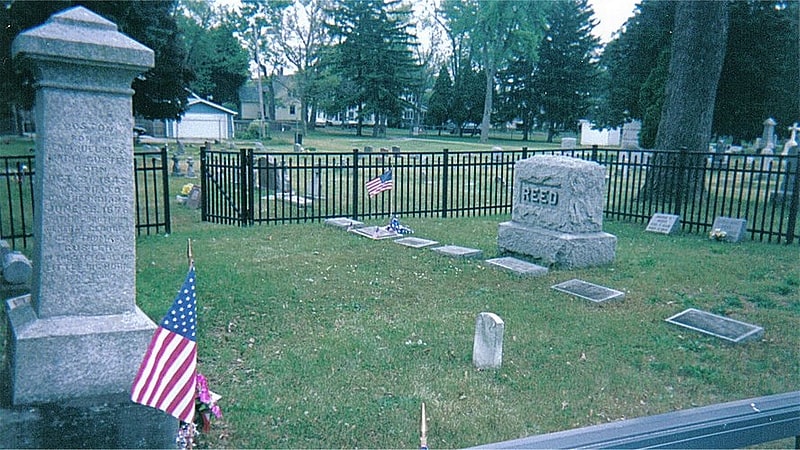
Cemetery in Monroe, Michigan. Woodland Cemetery is a public, city-owned cemetery located at 428 Jerome Street in the city of Monroe in the U.S. state of Michigan. It occupies 10 acres and contains over 6,500 graves. Founded in 1810, it is one of Michigan's oldest public cemeteries. Its oldest burials are veterans who served in the American Revolutionary War. Woodland Cemetery was designated as a Michigan State Historic Site on July 21, 1988.
Many of Monroe's earliest settlers, politicians, and war combatants are buried at Woodland Cemetery, including some of those that were killed during the Battle of Frenchtown in 1813. The cemetery contains Monroe veterans from every major war from the American Revolutionary War to the Vietnam War. A notable burial plot belongs to the families of Monroe residents George Armstrong Custer and his wife Elizabeth Bacon Custer, although neither of those two are buried at Woodland Cemetery. His younger brother, Boston Custer, and his nephew, Henry Armstrong Reed, are buried at Woodland Cemetery after having died alongside George Custer at the Battle of the Little Bighorn in the Montana Territory on June 25, 1876.
Woodland Cemetery is located right next to the Zion Lutheran Cemetery, but the two are separate cemeteries.[5]
The River Raisin Centre for the Arts
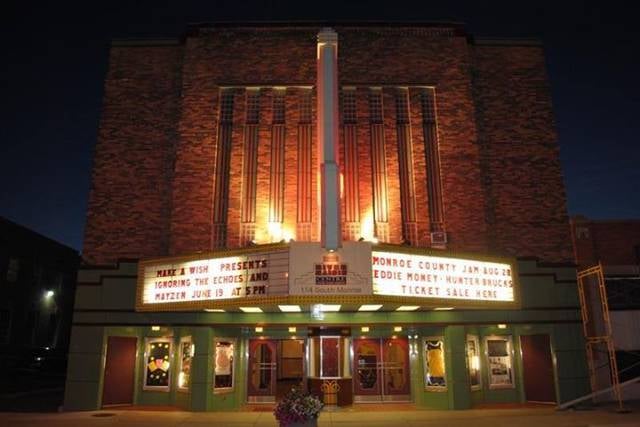
Concerts and shows, Performing arts, Event space, Theater
Address: 114 S Monroe St, 48161 Monroe
River Raisin Territorial Park
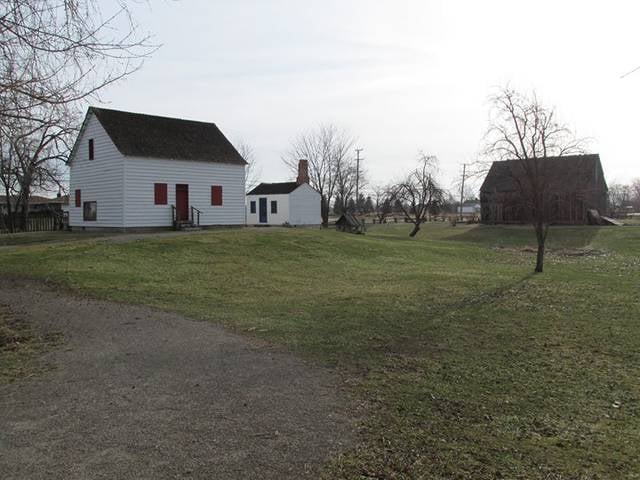
History museum, Museum, Park, Relax in park
Address: 3815 N Custer Rd, 48162-9646 Monroe
St. Mary's Academy Historic District

The St. Mary's Academy Historic District is a religious building complex located at 610 W. Elm Avenue in Monroe, Michigan. It was listed on the National Register of Historic Places in 2019.[6]
Wing–Allore House
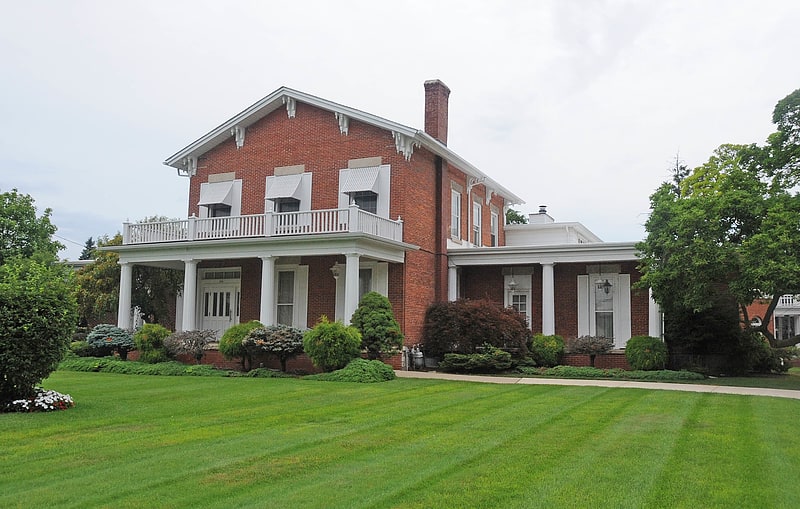
The Wing–Allore House is a funeral home located at 203 E. Elm Avenue in Monroe. The house was built as a private home, converted to a funeral home in the 1930s, and remains in business as the Allore Chapel of the Martenson Family of Funeral Homes. It was added to the National Register of Historic Places in 2014.[7]
Weis Manufacturing Company building

The Weis Manufacturing Company, currently known as WoodCraft Square, is a former factory located at 800 West 7th Street in the city of Monroe in Monroe County, Michigan. It was listed as a Michigan Historic Site and added to the National Register of Historic Places on October 26, 1981.[8]